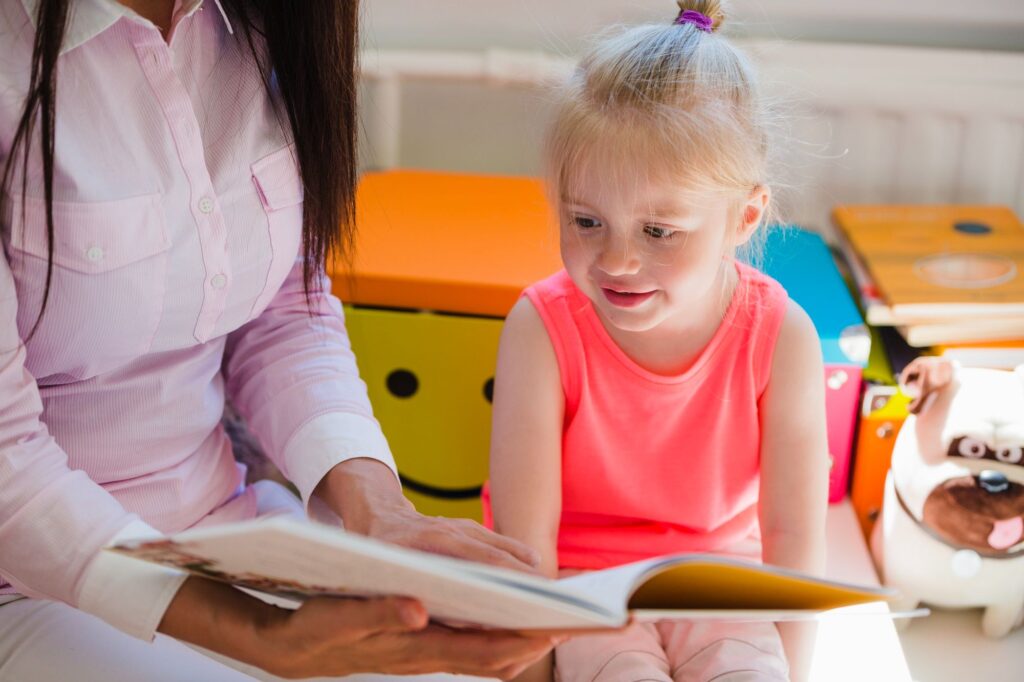“Read to me books” build language skills: increase vocabulary, and enrich social language skills, both expressive, (speaking) and receptive (understanding).
By reading daily with your child, you can encourage literacy skills like predicting, retelling, sequencing, and summarizing that they will need when they begin to read. Before you read the book to the child, here are just a few suggestions:
Previewing: This means letting your child gather clues — from the book’s title and cover illustrations and doing a picture walk of the inside illustrations, to try to figure out what might happen or what they might learn from this book they are going to hear.
Introducing concepts of Print: Understanding that print carries meaning. Demonstrating that – we read from left to right as the reader slides a finger under the words in the text. This will let the child know you are words and not narrating from the illustrations. Encourage the child to follow along and note where to begin on the page and where to end.
Arousing curiosity: During the picture walk, talk about what you notice and what you are wondering about. As an example, if a girl is sitting by a window wearing a huge smile, you might ask, “Why might she be smiling? (Maybe she sees a favorite friend, family member, the ice cream truck, or sunny skies).
For every question you ask, add, “Why do you think so? Let’s read to find out.” (You are actually teaching previewing and predicting which help with comprehension and engagement). Read with expression to keep your audience wanting more!
Ideas for building vocabulary– During the activity, talk about unfamiliar words. Define it, not to interrupt the flow of the story. After finishing, choose a couple of those words in a sentence. Encourage your child to use them too, always keeping it fun. Say the words often. Trust me, they’ll use them when talking with friends!
Illustrations are Important….
 ….to help predict what may happen next in the story.
….to help predict what may happen next in the story.
….to show how a character is feeling.
Add to the learning experience by doing some of the following:
Reading together can encourage critical thinking. Ask questions beginning with each of the five “W”s.
Having a dialogue. Asking questions like, “How do you think ____________ felt when_______?” “What is the problem______ is having?”
Always ask why!
“What would you do if you were in the same situation as the character?”
“Which character are you like? Why do you think so?
“Do you know anyone like any of the characters?”
Finally, make lots of eye contact, and give lots of specific praise. (You used good thinking skills to figure out what __________ character might do next!). Make reading aloud a daily way of bonding together.





